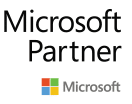Lab 1: Parameterizing a Command
- Identify changeable values
- Declare parameters
- Use parameters in place of changeable values
- Test the script
Lab 2: Creating a Script Module
- Creating a Script Module
- Saving the script module
- Adding a module-level variable
- Controlling module member visibility
- Testing the script module
Lab 3: Handling Errors
- Using the Try…Catch Construct
- Handling Command Errors
- Handling Non-Command Errors
- Logging Errors to a File
- Displaying Warning Messages
Lab 4: Writing Commands that Use Pipeline Input and Output
- Adding Pipeline Input Capability to Parameters
- Working with Pipeline Input
- Creating Custom Output Objects
- Outputting Objects to the Pipeline
Lab 5: Creating Hierarchical Command Output
- Retrieving and Enumerating Data
- Creating Child Objects
- Creating the Parent Object
- Displaying and Object Hierarchy
- Persisting an Object Hierarchy
Lab 6: Debugging Scripts
- Using Write-Debug
- Using PSBreakpoints
Lab 7 : Customizing Default Formatting
- Adding a Custom Type Name to an Object
- Creating a DefaultDisplayPropertySet Type Extension
- Creating a Custom View
- Adding Type Extensions and Views to Modules and Creating a Module Manifest
Lab 8: Adding Advanced Parameter Attributes and Command Documentation
- Defining Aliases and Help Messages
- Defining Parameter Validation
- Adding Comment-Based Help
- Writing a Command that Uses –Confirm and -WhatIf
Lab 9: Creating Controller Scripts
- Creating a Controller Script
- Parameterizing a Controller Script
- Testing a Controller Script
- Debugging a Controller Script
Lab 10: Creating Reports by using HTML
- Creating Reports by using HTML
- Converting Objects into HTML Fragments
- Combining HTML Fragments
- Adding Basic Formatting
- Creating Enhanced HTML Fragments
- Applying Conditional Formatting
Lab 11: Creating Basic Workflows
- Importing the PSWorkflow Module
- Converting a Function to a Basic Workflow
- Parallelizing Commands
Lab 12: Working with XML Data
- Loading XML
- Manipulating XML as an Object Hierarchy
- Selecting XML Elements by using XPath
- Modifying XML
- Saving XML
Lab 13 : Creating Proxy Functions
- Generating a Proxy Function Template
- Modifying the Template
- Using the Proxy Function
- Bypassing a Proxy Function
Lab 14: Building Tools in Windows PowerShell
- Designing the Tool
- Implementing the Tool
- Testing the Tool


